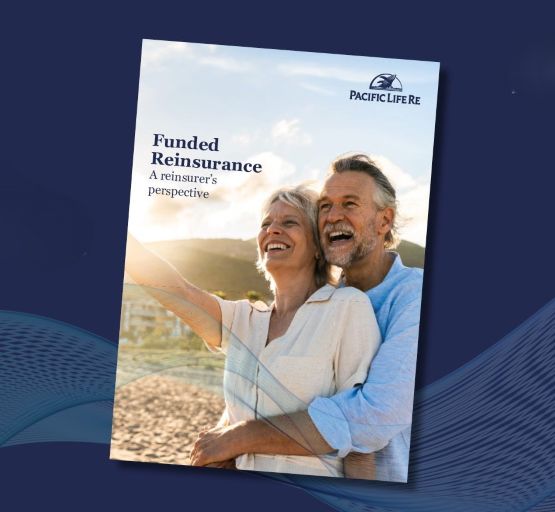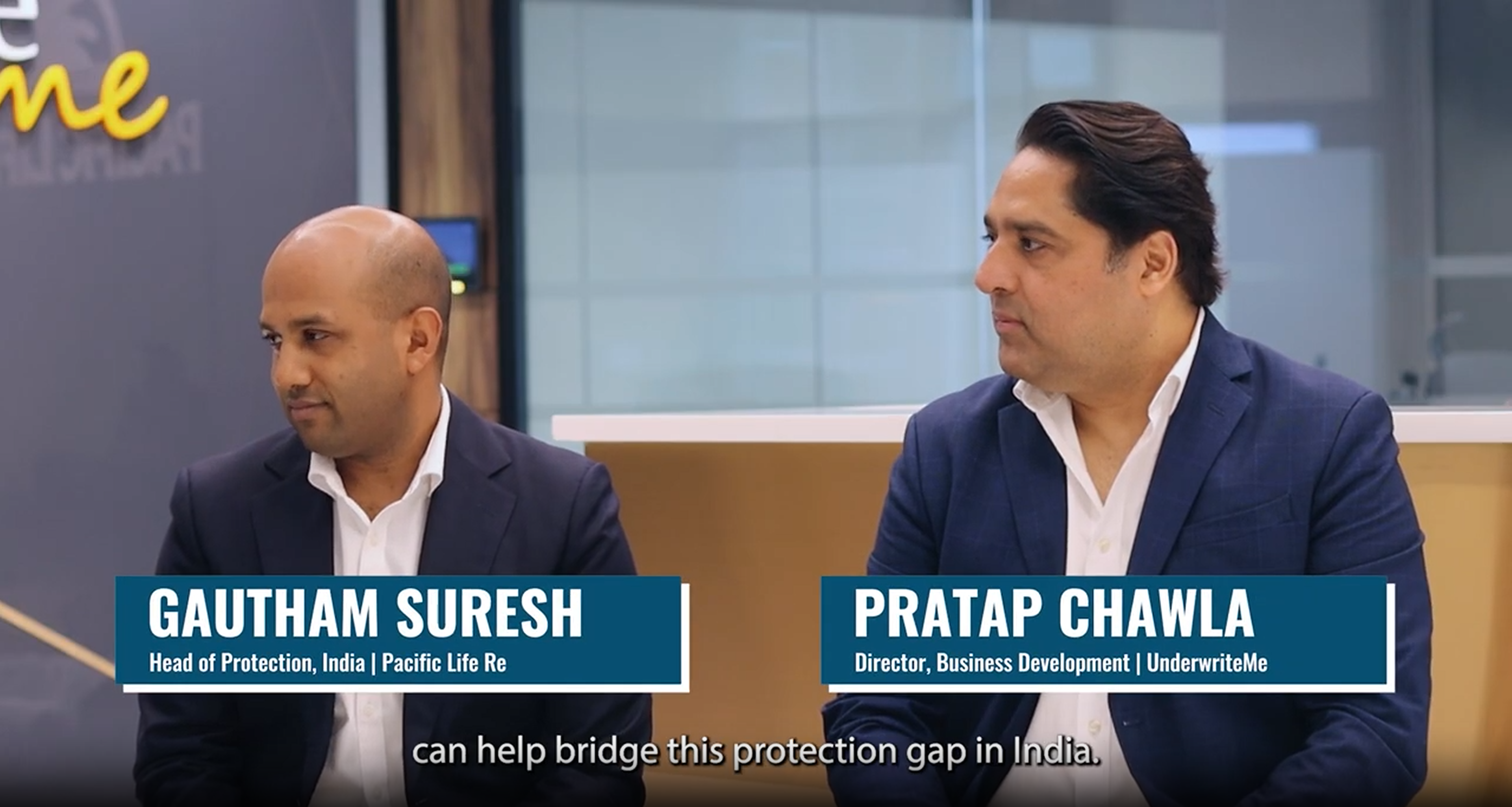Pacific Life Re | October 2025
- APAC insurers are moving faster on Al than peers in the US and Europe, supported by pragmatic regulatory environments and industry initiatives.
- There are greater returns in reducing claims disputes and improving underwriting accuracy, rather than in cost-cutting, according to EY's Regional Leader Lisa Bouari.
- Firms like Pacific Life Re are embedding Al into governance through risk-tiered models, adding human-in-the-loop checkpoints and targeted testing.
- With 11-15% of roles set to shift under GenAI, insurers emphasise Al's role as a partner that supports managers and employees.
Insurers are restructuring governance and training to balance Al innovation with oversight and human expertise.
Asia-Pacific insurers are accelerating their use of artificial intelligence at a pace that rivals or even surpasses their peers in the US and Europe.
The region is benefiting from a pragmatic regulatory approach. Unlike in the US, where Al-first startups are beginning to disrupt incumbents, or in Europe, where regulators are drafting Al-specific rules, insurers in Asia-Pacific are moving quickly under regimes that treat agentic Al as part of the broader Al umbrella, avoiding over-regulation while still emphasising compliance, said Lisa Bouari. EY's Regional Al Leader for Oceania.
"I would say that they're quite aggressive and progressive in their adoption here [in APAC]," Bouari said. "Some of them have had this on their roadmap for quite a long time. They definitely see it as a competitive advantage, if not part of their survival in the competitive environment that they're in."
A few industry initiatives have been mandated. Hong Kong Insurance Authority (HKIA) recently launched its Al Cohort Programme with seven major insurers, including AIA, AXA, FWD, HSBC Life, and Prudential. The scheme aims to establish an Al Centre of Excellence, nurture Al talent, and promote knowledge sharing across underwriting. claims, fraud detection, and customer service.
ROI in claims and underwriting
While much of the public debate on Agentic Al in insurance has centred around job cuts and cost savings, Bouari stressed that these are its least productive use cases. Reducing secondary claims that minimise the likelihood of complex legal disputes is the true return on investment.
"This is where the real money is for insurers," she said. "It's on the ability to pay out less claims or to make less risky decisions when underwriting. to avoid regulator fines of hundreds of millions of dollars. And I think that's where a lot of insurers are starting to think about Agentic Al for."
Evidence of this shift is already visible
Just recently. Tokio Marine worked with OpenAI to use Deep Research to align demographic data with products, improving underwriting accuracy. Gallagher, for its part, tapped marine lnsurtech Vanguard Tech for 24/7 vessel monitoring, using its Digital Guard platform to scan shipping routes for hazards, reducing incident risk and increasing confidence in pricing.
Analysts expect even bigger changes ahead. With autonomous mobility reducing accidents, auto premiums could fall 30-50% over the coming decades, eroding one of insurers' largest revenue streams, according to EY. The counterbalance will then come from Al-enabled underwriting precision and dynamic pricing models.
Still, Bouari cautioned that the technology's capabilities should not override practical limits. "There's no technical limit," she said. "But there's limits in terms of what you would want to have an agent do."
While Al could autonomously perform underwriting risk assessments, firms may prefer to keep the acceptance of policies under human control. In claims. too. An end-to-end automated process is technically feasible. but complex cases involving medical judgments or nuanced calculations still demand human oversight.
Al reshaping governance
Many APAC insurers are also applying Al not just to boost efficiency, but to strengthen regulatory and compliance frameworks, which is beginning to reshape how leading firms structure their Al adoption.
Pacific Life Re, a global reinsurer and an active proponent of advanced analytics, illustrates how these shifts are unfolding on the ground.
"Agentic Al has prompted us to revisit model boundaries," said Nick Gabriele, Asia Risk Director at Pacific Life Re. "When agents are embedded in workflows like document parsing or data structuring, this raises questions around classification, escalation, and what constitutes 'production' use."
The reinsurer developed a risk-tiered governance model anchored in the Three Lines of Defence (3LoD) and aligned with the National Institute of Standards and Technology (NIST) standards. Its safeguards include human-in-the-loop checkpoints for high-impact use cases, prompt governance to prevent misuse and drift, targeted testing for Al systems parsing sensitive data, and cross-functional oversight forums linking Legal. Risk. IT, and business teams.
"GenAI is evolving quickly, and so is our approach. The goal is to ensure innovation happens within a framework that is explainable, auditable, and proportionate to the impact of each use case."
At the same time, Al is a technology that cannot be left on autopilot. Bouari describes it as "a living, breathing thing" that needs constant monitoring, including checks for model drift, continuous alignment with evolving business requirements, and putting up safeguards against data poisoning."Governance becomes really important to implementing Al in a safe way forward," she said.
People at the centre
Even as governance tightens and ROI shifts toward risk, insurers know that adoption still hinges on people. Workforce transformation is already underway. An EY survey found that 11-15% of insurance roles could be upskilled, retrained or displaced by GenAI within the next two years.
For Mike Plaxton, an independent consultant and former CEO of several insurers like FWD Insurance in Thailand, the key is not replacement but partnership. "There is a far better way of achieving profit from the significant investment needed to build sound Al systems: use it to empower the people," he said.
Plaxton suggests Al should be employed like a "full team member" that provides information people can act on. In his experience. tools like daily sales reports created transparency but only work when managers engage directly by celebrating wins, supporting setbacks and agreeing on next steps.
He also argues for hiring organisational development specialists to help managers act on Al insights. "Culture and behaviour are essential for a high-performing team," Plaxton argued. "I believe hiring them is essential in maximising the return from Al/Digital partnerships with people."

"When agents are embedded in workflows like document parsing or data structuring, this raises questions around classification, escalation and what constitutes 'production' use."
Nick Gabriele
Director, Risk | APAC | Pacific Life Re












.png)
.png)





















.png)